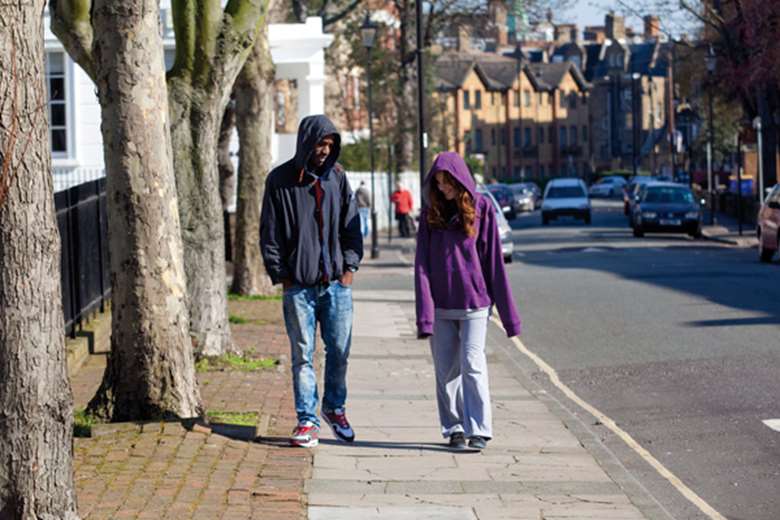Project Phoenix
Emily Rogers
Tuesday, September 13, 2016
Collaboration between local authorities in Greater Manchester and multi-agency partners to protect children from sexual exploitation and bring offenders to justice.

- Project Phoenix spreads public awareness of child sexual exploitation (CSE) and trains professionals across Greater Manchester in identifying children at risk
- It is a partnership between 10 Greater Manchester local authorities and multi-agency partners to ensure a consistent, joined-up approach to protecting children from CSE and bringing offenders to justice
- Support for victims of CSE and those at risk is provided through a specialist co-located multi-agency team in each authority, which assesses risk through a single form shared by all 10 councils
ACTION
Project Phoenix was established in 2013 in response to high-profile CSE cases including the 2012 jailing of nine men for grooming and abusing teenagers in Rochdale. It was set up by Greater Manchester's 10 councils and partners in a drive to get everyone working together more effectively in protecting children and bringing about successful prosecutions.
Phoenix's annual action plan is produced by a monthly steering group of managers from councils, safeguarding children boards, police and charities, chaired by its manager Damian Dallimore. He reports to an executive board of senior children's and health services directors chaired by Salford Council boss Jim Taylor, with representation from the Police and Crime Commissioner's (PCC) office. Dallimore started his role in January 2014, with funding from the Association of Greater Manchester Authorities.
Dallimore oversees Project Phoenix's communications strategy, which includes the website itsnotokay.co.uk, guiding young people, parents, public and professionals in spotting and reporting CSE. In explaining how agencies work together to support CSE victims under Phoenix, he cites the example of a teenager attending school looking tired and heavily made-up, smelling of alcohol and perhaps adorned with expensive jewellery. Her teacher spots these signs and the school contacts children's services, which passes the details to the authority's multi-agency safeguarding hub. Any CSE signs result in the case being passed to the specialist CSE team.
This multi-agency, co-located team includes full-time specialist social workers and police, who meet daily to discuss overnight incidents and share updates on high-risk cases. Most teams also include family or parenting support workers and four include specialist nurses, linking police and social workers with health services. The others work in partnership with their authority's lead CSE health worker.
A social worker from the team visits the child to build a relationship, leading to a risk assessment shared by all 10 authorities, which Dallimore says is crucial to ensure a consistent and equitable approach. "Before Phoenix, children with similar experiences and risks were described in different ways; a ‘medium risk, child in one authority could be ‘high risk, in another, so they'd get a different service and level of expertise," explains Dallimore.
The Phoenix assessment results in a score out of 60, and a banding of low, medium or high risk. Medium- or high-risk cases will be held by a member of the CSE team, while lower risk cases can be handled by "early help" services in schools and other universal settings, through advice on issues including internet safety and safe relationships.
CSE team caseholders co-ordinate a bespoke plan for the child, brokering whatever services are needed to reduce his or her risk. In cases of family conflict, parental support or family group conferencing can be offered, to rebuild family support networks and equip parents with conflict resolution skills, helping reduce children's missing episodes. Children with drug and alcohol issues can be linked with specialist services and mental health support can be brokered through the team's specialist nurses or the authority's CSE health lead. "If the child sees an offender as a boyfriend or girlfriend, and can't see they're being groomed or exploited, the team's primary purpose will be showing them that what's happening is abusive," Dallimore explains. "If offences are taking place, police will act on them. Our social workers are fantastic at building trusting relationships, so that when a child does finally recognise the abuse, they're there to support them."
CSE teams update their risk assessment every three months, or following significant events such as a bereavement or school exclusion, continuing support until the risk has reduced. The 10 authorities act as critical friends to each other: each team is peer-reviewed annually by a multi-agency panel, with representation from the PCC, police and health services, the sexual assault referral centre and a social worker from another authority. They review six open cases, reporting on good practice and opportunities for development. Dallimore chairs a meeting of the project's 10 operational leads every two months, enabling them to share best practice. And CSE teams train frontline staff, including teachers and police response officers, in spotting and reporting CSE.
IMPACT
Case files show the number of medium to high-risk CSE cases across Greater Manchester increasing from 230 in September 2014 to 367 in June this year. But although the number of medium-risk cases more than doubled from 139 to 283, high-risk cases reduced, from 91 to 84.
Dallimore attributes the increase in medium-risk cases to the training and awareness-raising under way after his appointment in January 2014, helping people spot and report possible CSE. "What I'm most happy about is the number of high-risk cases decreasing," he says. "That tells us our practitioners are better able to identify risk at an earlier stage and stop it escalating, by putting protection around the child."
Launched in September 2014, Phoenix's website itsnotokay.co.uk had received 174,288 hits by July this year, 22,995 of them during its week-long campaign in March to raise awareness of the risks of going missing. New users make up 82 per cent of website visitors.
Crown Prosecution Service data obtained by Dallimore shows the percentage of convictions resulting from North West child and adult sexual abuse cases, excluding rape, increasing from 76.9 per cent in April last year to 81.6 per cent in March this year, the highest rate in England.




